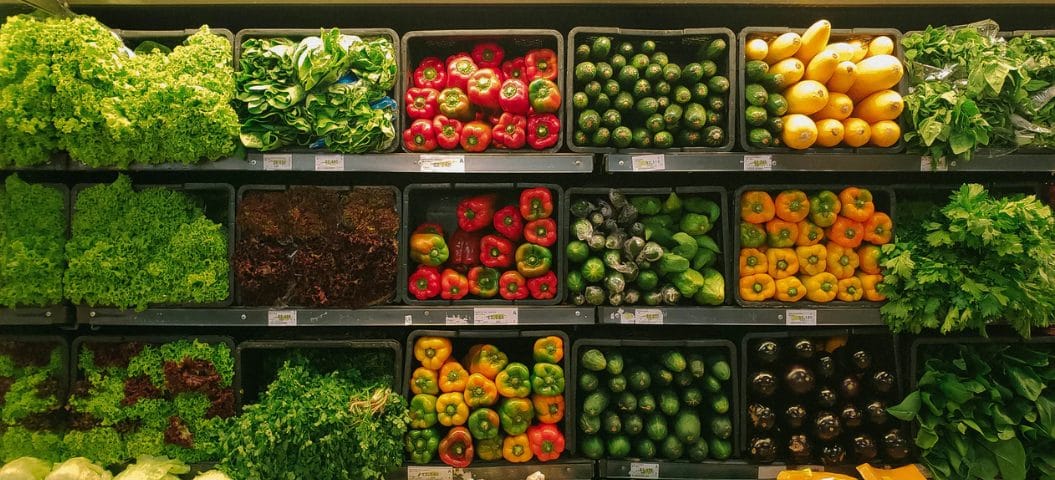
As the world becomes more tech-centric every day, digitization efforts are even making their way to the grocery aisle through the blockchain.
Though it may sound far off, companies in the food and beverage supply chain are rapidly adopting blockchain platforms as a means of creating visibility, traceability, and efficiency.
According to research from Gartner, 20 percent of the top-10 global grocers will use the technology in everyday operations by 2025.
What is this blockchain innovation, you ask? It is a technological advancement that has been around for a while but is quickly becoming a mainstream fixture with many different applications.
The blockchain is a digital ledger that records information about virtual transactions like the date, time, dollar amount, and parties involved in purchases.
Typically, when most hear the word blockchain, they think of cryptocurrency. From Bitcoin to Litecoin, there are thousands of cryptocurrencies, each of which is backed by blockchain.
However, cryptocurrency is just the most popular application for the technology. There are many other uses for blockchain, including improving the cooperative efforts of the different parties in the food and beverage supply chain.
In an age where food and beverage safety and ingredient sourcing are two crucial product features, blockchain is helping all manufacturers, retailers, and consumers maintain critical visibility.
From the lettuce in your salad to the coffee beans in your latte, all food and beverage products can use the blockchain to increase the transparency of how products are produced, processed, and distributed.
IBM Food Trust and Blockchain in the Food Industry
A significant driver of the blockchain in the food and beverage supply chain is IBM. The tech industry incumbent created the IBM Food Trust in 2017 to store information about products from farm to table.
All who use the platform can now track products as they are harvested, processed, packaged, and distributed.
And some of the world’s largest grocers, manufacturers, and retailers are already using this tech solution.
Brands like Nestle, Kroger, Tyson Foods, and Walmart are all Food Trust participants. The reason—increased visibility and efficiency in their supply chains.
According to a Hyperledger case study on Walmart’s adoption of the tech, the retailer improved its ability to trace its source of mangos sold at its stores from 7 days to 2.2 seconds.
This near-exponential reduction in processing time is crucial for retailers when managing recalls or contamination issues.
Other Food Blockchain Applications
Blockchain applications in the food and beverage industry do not end with IBM. Other companies are bringing the concept to both consumers and suppliers.
Companies like Provenance offer manufacturers and consumers the ability to focus on the environmental impact of their purchases.
While others like Zest Labs trace the food freshness and enables companies to reduce waste, and platforms like Avenews-GT in Israel connect food manufacturers directly with farmers to source ingredients.
These applications all aim to increase traceability, transparency, supply availability, and efficiency for all parties. These are important for improving operations at food and beverage manufacturers.
What Does Blockchain in the Food Industry Mean for You?
Moreover, these forward-looking applications are creating a blueprint for how the industry will conduct business in the coming decade, as well as providing value-added services to consumers.
Large food and beverage brands like Nestle, Tyson, and Dole are using the technology to provide the transparency their customers are searching for.
According to an article published by Forbes, transparency is the most critical trend for food and beverage consumers in the coming years. Shoppers want to know how their food and beverage products are made and where their ingredients are sourced.
As food blockchain technology becomes more readily available for producers of all sizes, early adopters stand to position themselves more favorably with consumers.
In addition to providing operational efficiencies, brands that can incorporate blockchain into their operations can gain a competitive advantage over their peers.
Food and beverage vendors that utilize the technology will allow customers to scan a QR code on their product and see how their product arrived on the shelf. This is key for consumers and can be a differentiator for your brand.
Work with a Tech-Focused Logistics Solutions Provider
Even though the widespread implementation of food blockchain technology may be some years away, tech-focused logistics firms are providing similar benefits to customers.
Zipline’s intelligence tool, KanoPI, can provide end-to-end transportation visibility to shippers. Our freight visibility platform and shipment tracking tool, The Summit, provides Zipline Logistics’ customers with illustrated real-time updates about the location and status of their orders.
We understand the need for constant visibility. Talk to us about how we’re helping shippers see the whole of their transportation operation.